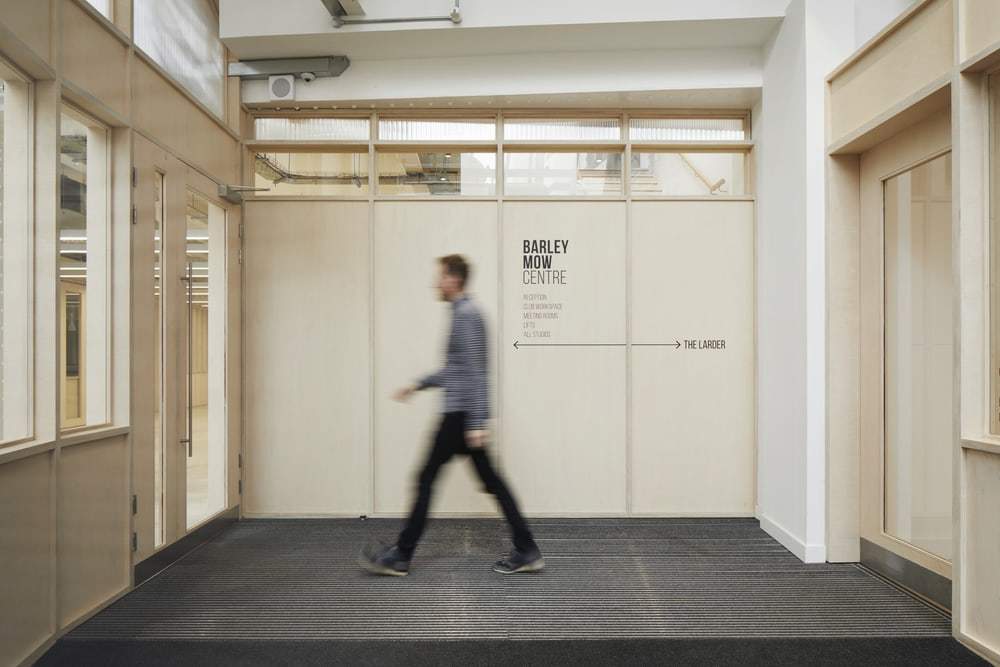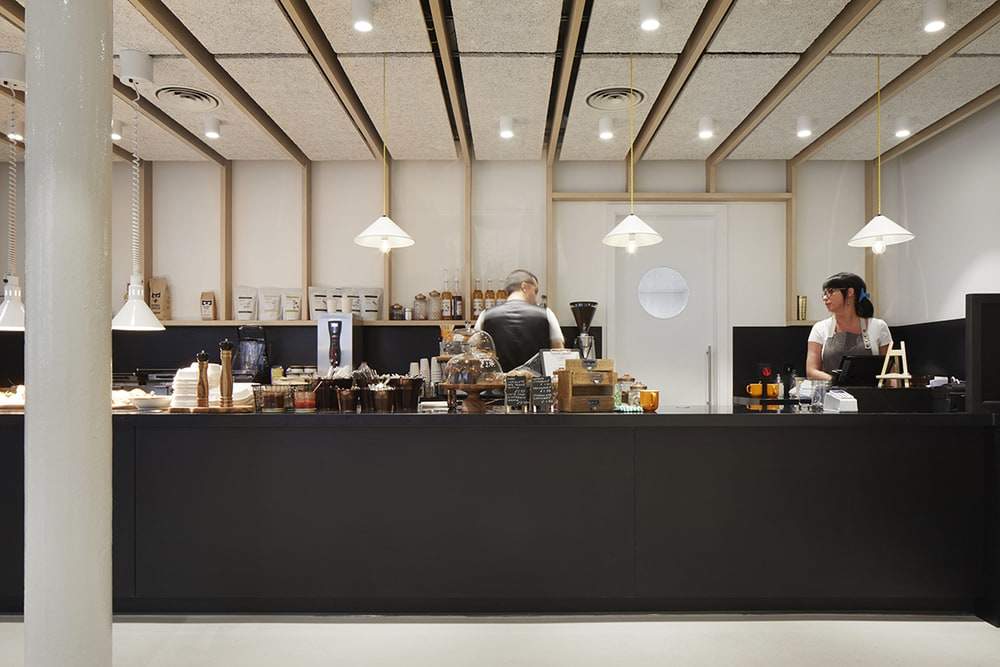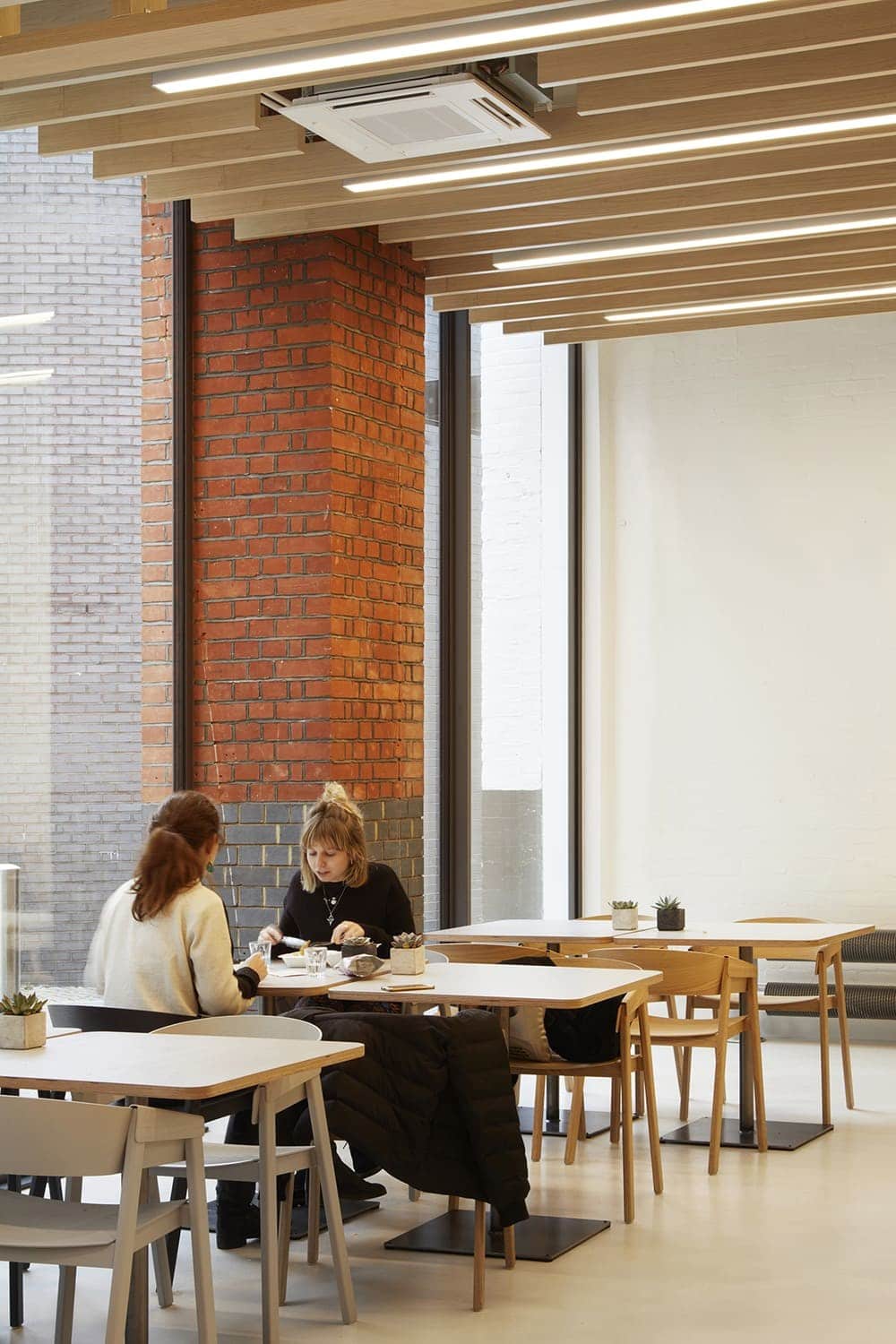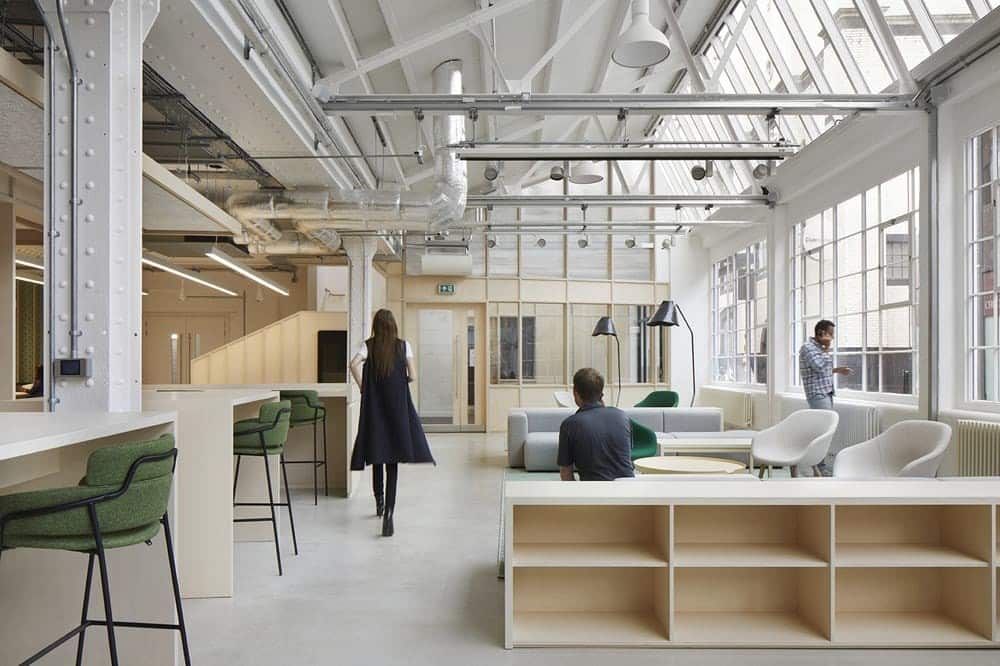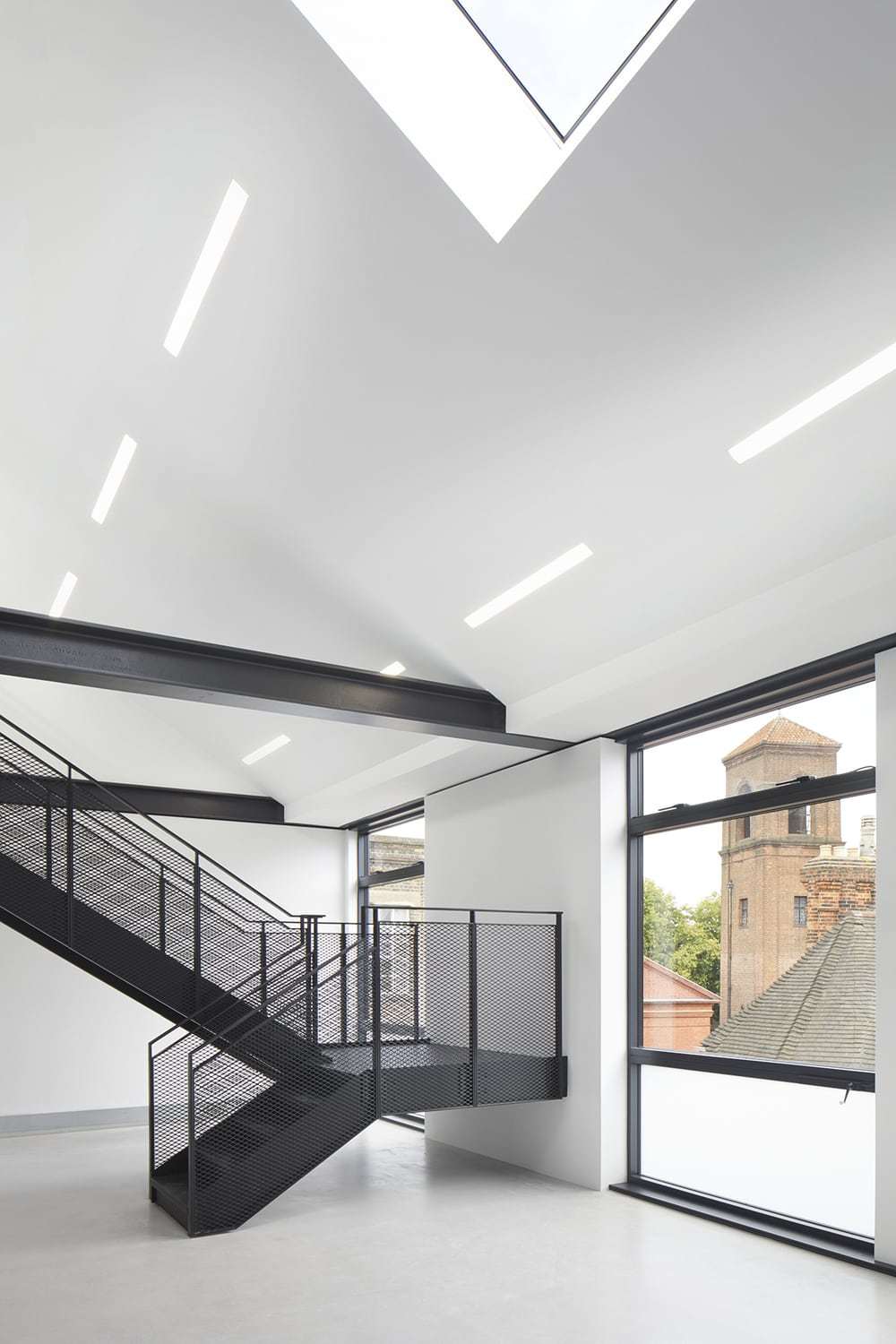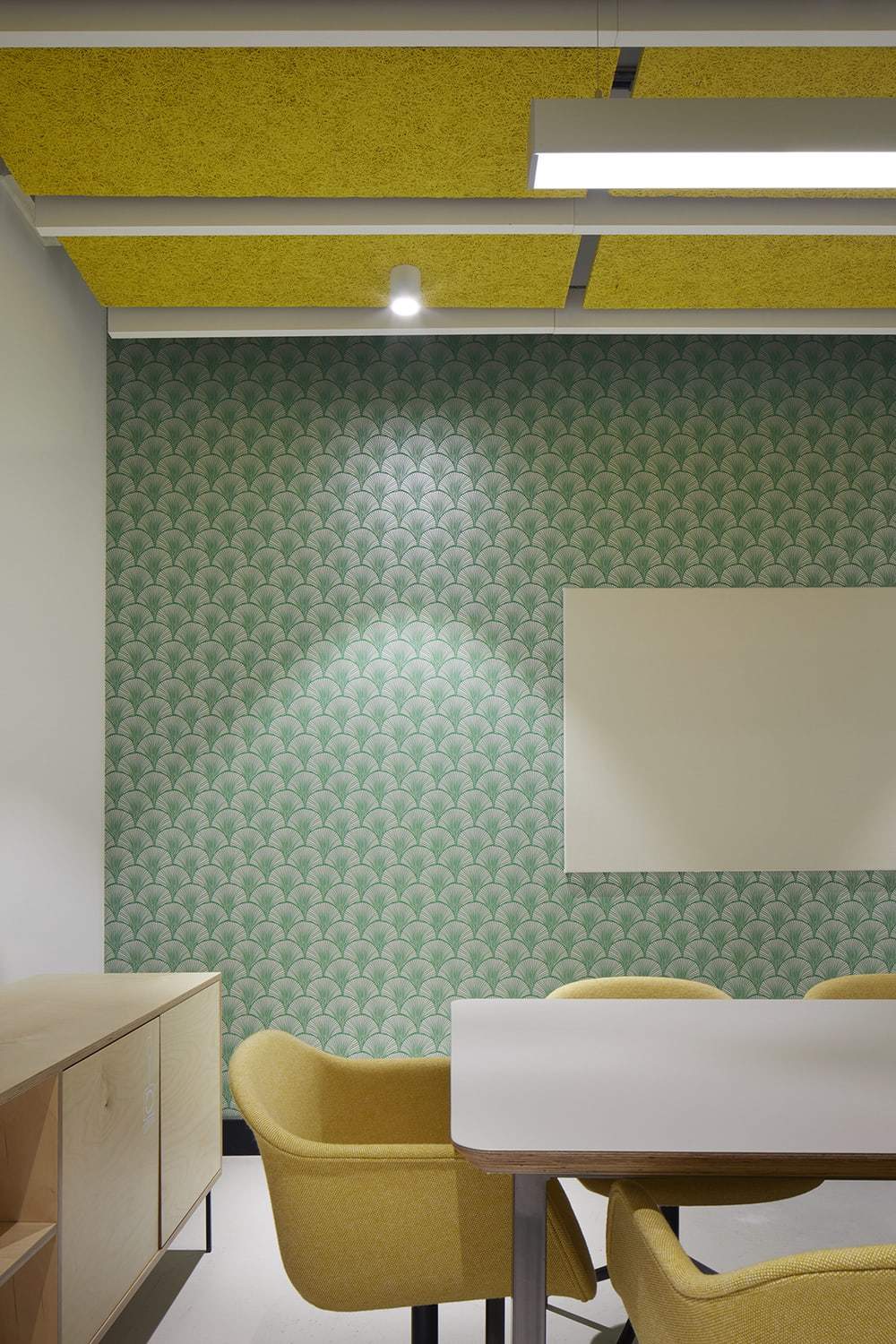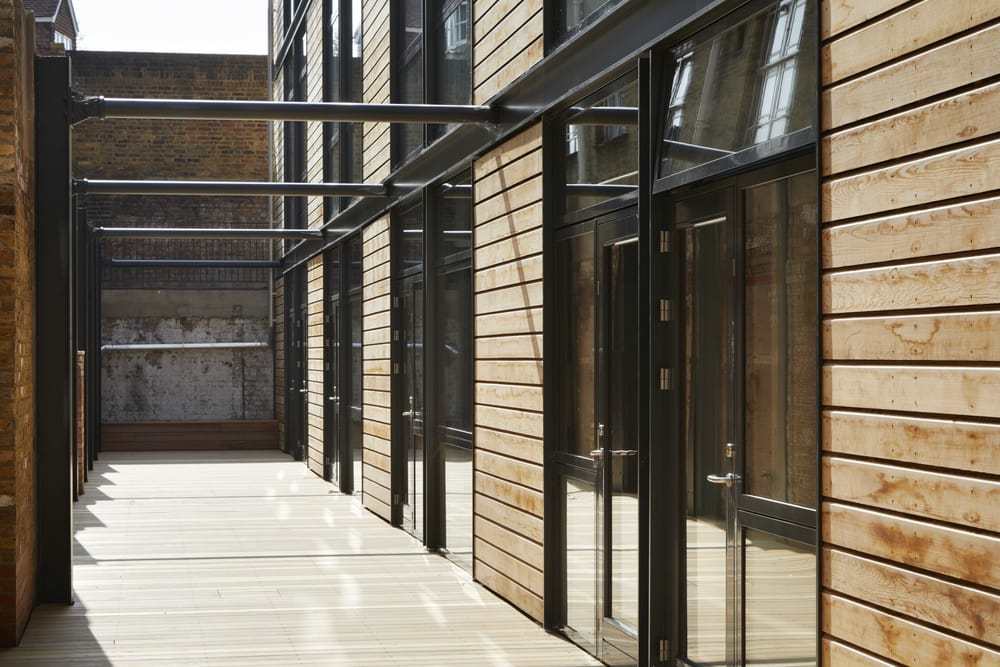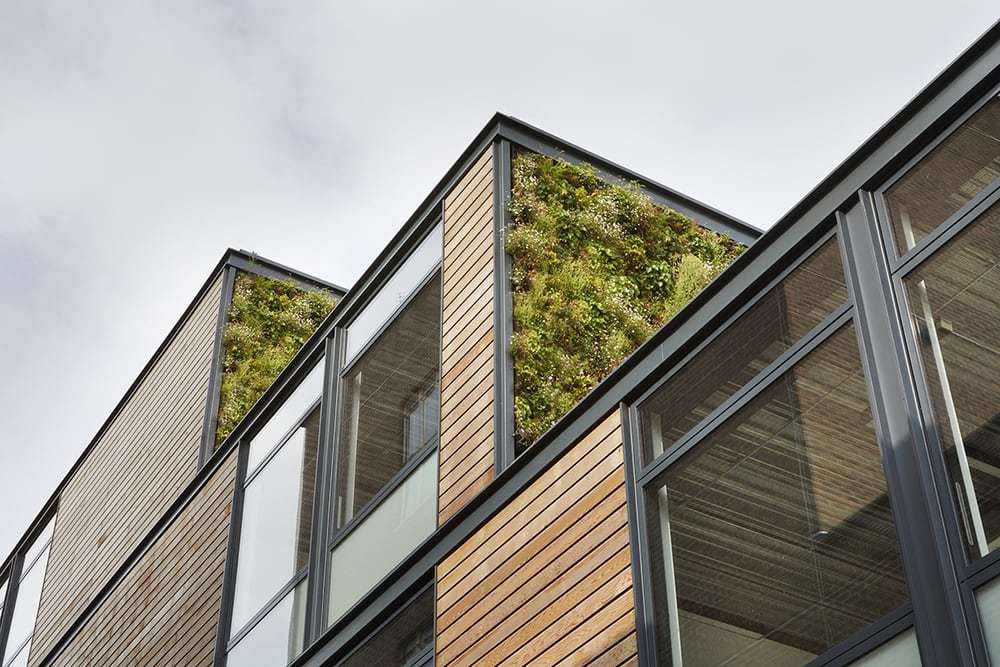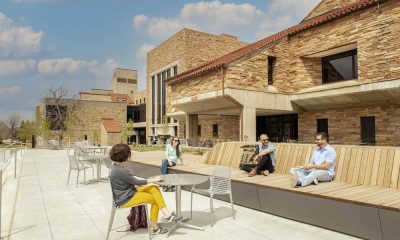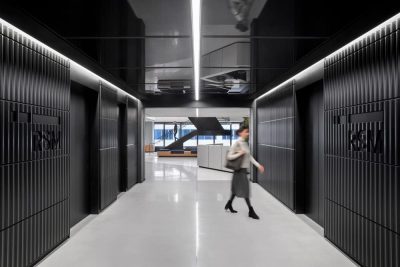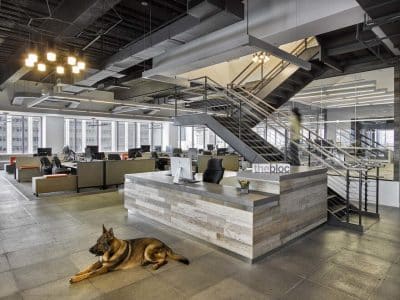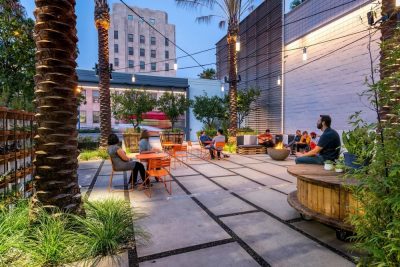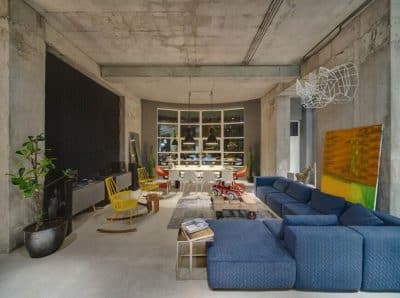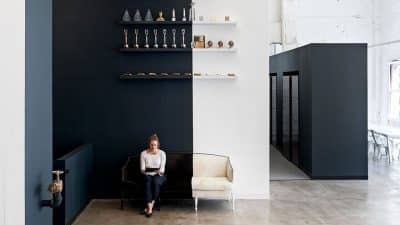Project: Barley Mow Centre
Architecture: Ben Adams Architects
Project team: Ben Adams, Nicholas Jewell
Location: Chiswick, London, UK
Area: 4,000 sqf
Budget: £7m
Awards: Surface Design Awards 2018 ‘Best Exterior’ shortlist
Text: Courtesy of Ben Adams Architects
Photos: Courtesy of Ben Adams Architects
This bright and light office extension for rental market leaders, Workspace, creates a new co-working offer, with collaboration at its core, in the heart of West London’s leafy Chiswick.
Our remit for the Barley Mow Centre was to demolish a single storey shed, built in the 1970s, and replace it with a six-storey office building, with improved and rationalised circulation throughout.
Aimed at start-ups, tech professionals and consultants who work with City clients, Barley Mow combines open plan co-working spaces and opportunities for tenants to meet and share ideas, with more intimate spaces and private booths.
A new main entrance creates a strong and vibrant presence at street level to draw the public as well as building tenants through a bustling foyer which seamlessly incorporates a public café, retail space, and a bright co-working lounge.
A range of seating options includes single tables and collaborative booths, as well as bleacher style seating that can be used by all tenants for presentations, social events and pitches. Other features include ample cycle storage.
The original Victorian building adjacent to the new structure was once a wallpaper factory. References to this cultural heritage permeate the aesthetic and interior finishes of the new design, combined with more contemporary finishes such as robust black OSB panelling in heavily used areas, light birch ply and polished concrete floors, giving the building a unique character.
The project was located on a completely landlocked site, overlooked from all sides, which meant that our design had to be particularly sensitive to neighbours, local residents and planning constraints. The four storeys of the extension step back at each level to create a series of landscaped terraces with sedum and wildflower-planted roofs which minimise the visual impact of the building and create much-needed green space for locals.

